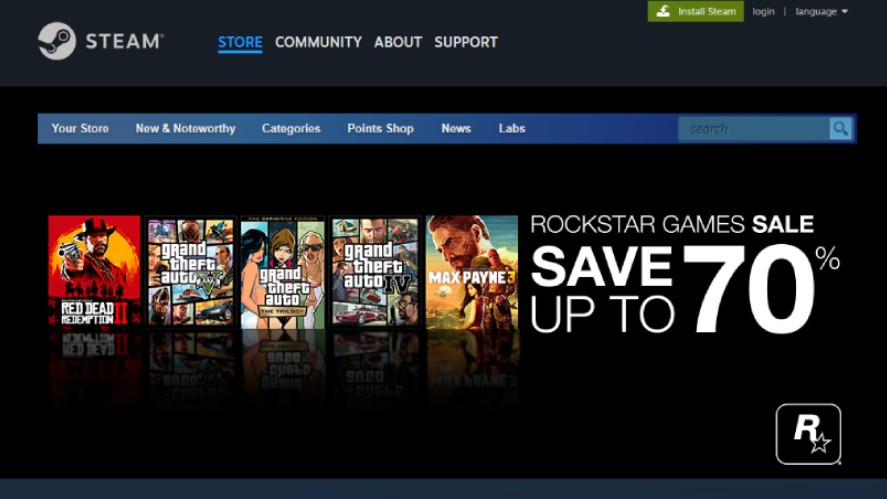In the vast landscape of the gaming industry, video game publishers play an important role in bridging the gap between game developers and players.
They give financial support to game development and work closely with game developers in order to publish games on time within a determined budget.
Over time, the business model of video game publishing has undergone a noticeable change. While in the past, publishing focused on physical distribution, today’s digital age has shifted the publishing to the online platform.
So, in this article, we’ll look at how the video game publishing business model has evolved and adapted to changing times.
The Role of Video Game Publishers
So, what does a video game publisher do?
To support the entire game development process to bring the video game titles to life, they have to do many important jobs.
First and foremost, game publishers give the money upfront to indie game developers to make the games. They typically negotiate with the game development company or studio to gain a budget agreement to cover all production activities.
Because video game publishers finance the game development, they have to minimize risk as much as possible.
They have to go along with the project managers and monitor throughout the development process, tackle immediately any arisen problems, and ensure the game meets quality standards.

Publishers also handle the distribution task. They have to make sure the game gets to players by putting them on different consoles, computers, or mobile devices so people can buy and play it.
After distributing the game to various platforms, the game publishers are now responsible for the marketing role. They typically promote games through various channels like social media, advertisements, and events.
Other tasks that are the responsibility of video game publishers include managing licensing agreements and localizing game content to global audiences.
As you’ve reached there, you’ve captured the main role of video game publishers in the video games industry. But we want you to distinguish between internal and external development within the game publishing.
Internal development refers to games created by studios that are directly managed by the publisher.
On the other hand, external development involves partnering with independent or third-party studios to produce games.
Types of Video Game Publishers
In the world of video game publishing, there are distinct categories of publishers that cater to different types of games and developers. Let’s explore which are they!
AAA Game Publishers
They are the biggest video game publishers in the industry, known for their high budgets and blockbuster titles.

They often work on large-scale operations and invest heavily in marketing and distribution to create mainstream games.
Indie Game Publishers
Unlike AAA publishers, indie publishers like to take chances on new and different concepts and focus more on nurturing creativity and originality.
They often collaborate with independent developers on smaller-scale projects.

Indie publishers help indie game developers bring their visions to life by supporting them all in the game development process, finance, marketing, and distribution.
An example of an indie game publisher is gamepublisher.com. If you’re looking for a suitable game publisher, feel free to check that out, and we’ll help you on your game publishing journey.
Mobile Game Publishers
Mobile game publishers specialize in the mobile gaming market which focuses on creating and distributing games for smartphones and tablets.

So, it is no surprise that they have expertise in optimizing games for touch-based controls and mobile interfaces.
They often employ monetization tactics such as in-app purchases, advertisements, and subscription models to maximize revenue.
Business Risks and Challenges
As the video game industry is a billion-dollar business, it also comes with various risks and challenges, which require publishers to carefully manage to ensure their success in this competitive landscape.
Seasonality of sales and market competition
Similar to other markets, the game market also experiences fluctuation in demands throughout the years.
During some particular seasons with holidays and gaming events, such as Christmas, demand reaches its peak.
Although these special selling seasons can bring a high portion of sales, they require publishers to prepare carefully to compete effectively in a crowded market.
That said, they have to anticipate the fluctuation and adjust their marketing strategies to promote products to their fullest effectiveness.
Product slippage and the risks of missed deadlines
Meeting deadlines is extremely important in this fast-paced video game industry market because games need to be released at the exact determined time to align with the advertising plan as well as adapt to customer’s desires.
However, delays in production, also known as product slippage, often happen due to various factors such as technical issues, resource constraints, or unexpected issues arising in the process.
As a result, these missed deadlines events can cause a decrease in product sales, the publisher’s reputation, and consumer trust.
“Hit-Driven” nature of the industry
As the video game industry growth becomes more “hit driven” over the years, players’ tastes in choosing games also change accordingly.
Players seem to buy the game with the best promotion in marketing campaigns rather than other games that are of the highest quality.
This affair, as a result, leads game publishers to try to ensure that their game achieves top status in its category. They invest their budget in marketing and promotion to make sure their game stands out among the competition.
Shift towards high-quality console games vs. casual game markets
With the development of technology and consumer demand, we now witness a shift towards high-quality, expensive console games.
Making games for these high-quality console games needs bigger teams because there are higher qualifications and more things to do.
Game publishers then have to face the challenges of increased development costs and more complex game development elements, such as textures, programming code, and more.
On the other hand, games in casual markets offer a different landscape. These games are typically smaller and simpler and are designed for PC or downloadable consoles.
But they still face their own challenges as the game market is fierce, and there’s no guarantee of success, which can lead to the risk of financial loss.
Monetization Strategies in Video Game Publishing
The ultimate objective of the video game publishing is to earn money. So, multiple methods of game monetization are adapted to different types of games to bring the revenue stream back to developers and those who invested in these titles.
Initially, we should mention traditional buy-to-play business models, which request players to make a one-time purchase to access the full game.
However, digital transformation and the popularity of the mobile gaming market also led to free-to-play business model traction.
These games are accessible to play without any upfront cost, so they have to rely on microtransactions and in-game advertising to generate revenue.
But what are microtransactions?
Microtransactions are a gaming industry business model that allows players to buy virtual goods such as game currencies, cosmetics options, and more to enhance players’ experience or accelerate their progress.

In-game advertising, otherwise, involves brands when displaying ad banners within the game. This method allows game publishers to generate revenue by partnering with advertisers, who pay to show their products or services to engaged players.
In addition to the above methods, subscription-based models also rise as a lucrative strategy. This way, players have to pay a regular game subscription fee to access all parts of the game within a specified period, such as monthly or annually.
Another way games make money is through downloadable content (DLC), season passes, and expansion packs.
Depending on the game, players can explore new levels, characters, storylines, and other content beyond the base game, which encourages player engagement for longer periods.
Marketing and Distribution
After the long process of game development, it’s important to focus on marketing and distribution to reach the target audiences effectively.
In the past, when the Internet was not widespread, the best way to sell games, like DVDs, was through physical copies of games sold in stores.
However, with the surge of digital media nowadays, players can now easily access games on various distribution platforms like Steam, Epic Games Store, and PlayStation Network.

So, game publishers can leverage all these channels optimally to increase the accessibility and visibility of the publishing games.
After distributing the game to various platforms and channels, it’s when marketing strategies come into play.
Advertising is a big part of getting people interested in games. This can be performed through online ads, social media promotions, or partnerships with influencers in the game industry.
Publishers can also use promotional strategies such as discounts, bundles, and limited-time offers to drive sales and attract new customers.
Furthermore, the impact of community engagement should not be ignored. By fostering relationships with players through forums, and social media, publishers can gather feedback, build brand loyalty, and create a vibrant game community for their game titles.
The Evolution of the Video Game Publishing Industry
The video game industry has experienced noticeable growth since its inception.
In the early days, video games were simple and limited in scope and were often played on arcade machines.
However, the landscape began to shift in the 1990s with the introduction of 3D graphics in games for the first time.
During the same period, the Internet became more popular, which allowed people to play games together online, thereby changing the industry landscape a lot.
As time passed by, technological advancements have had a profound impact on game development and publishing.
Noticeably, the transition from blocky 2D pictures to detailed 3D images has totally changed the game experience. Developers gained the ability to create larger, more complex worlds to immerse players in the gaming world.
Publishers also adapted their strategies to align with technological advancements.
One of the most significant shifts in the industry has been the transition from physical to digital distribution.
Instead of buying physical copies from stores, players now easily download games directly from the internet. This transition not only brings convenience to players but also opens up more opportunities for game companies to earn money.
The Economic Impact of the Video Game Industry
From a niche market to a huge global business, the value of the gaming market has constantly increased.
So, how much is the video game industry worth?
Well, we might not have the correct answer at the moment. However, it’s undoubtedly a billion-dollar business, with estimated statistics showing more than $214.2 billion in 2023.
Notably, the gaming industry is forecasted to reach a revenue of $365.6 billion, with a significant portion of this revenue, $105.9 billion, originating from China.

To achieve that admirable figure, game sales, in-game purchases, subscription models, and advertising revenue all contribute to the industry’s immense financial success.
Moreover, the industry is comprised of various segments, ranging from big-budget AAA titles to indie and mobile games, each contributing uniquely to its overall value.
Looking ahead, we expect that the gaming industry will continue to expand. As technology continues to evolve constantly, games with virtual and real-world elements are likely to create a blast in future revenue.
Moreover, the expansion of the gaming market into emerging regions will further increase revenue streams and contribute to the growth of the industry as a whole.
Conclusion
Understanding the video game publishing business model is important for anyone who is looking to join this dynamic field.
As technology continues to develop and affect every aspect of our lives, the gaming industry is no exception, as it will remain at the forefront of innovation.
So, whether you’re a developer, publisher, or simply interested in the gaming industry, it’s important for you to equip yourself with knowledge, stay updated with emerging trends and video game publisher news, and immerse yourself in this captivating world of video game publishing.
Loading survey...

